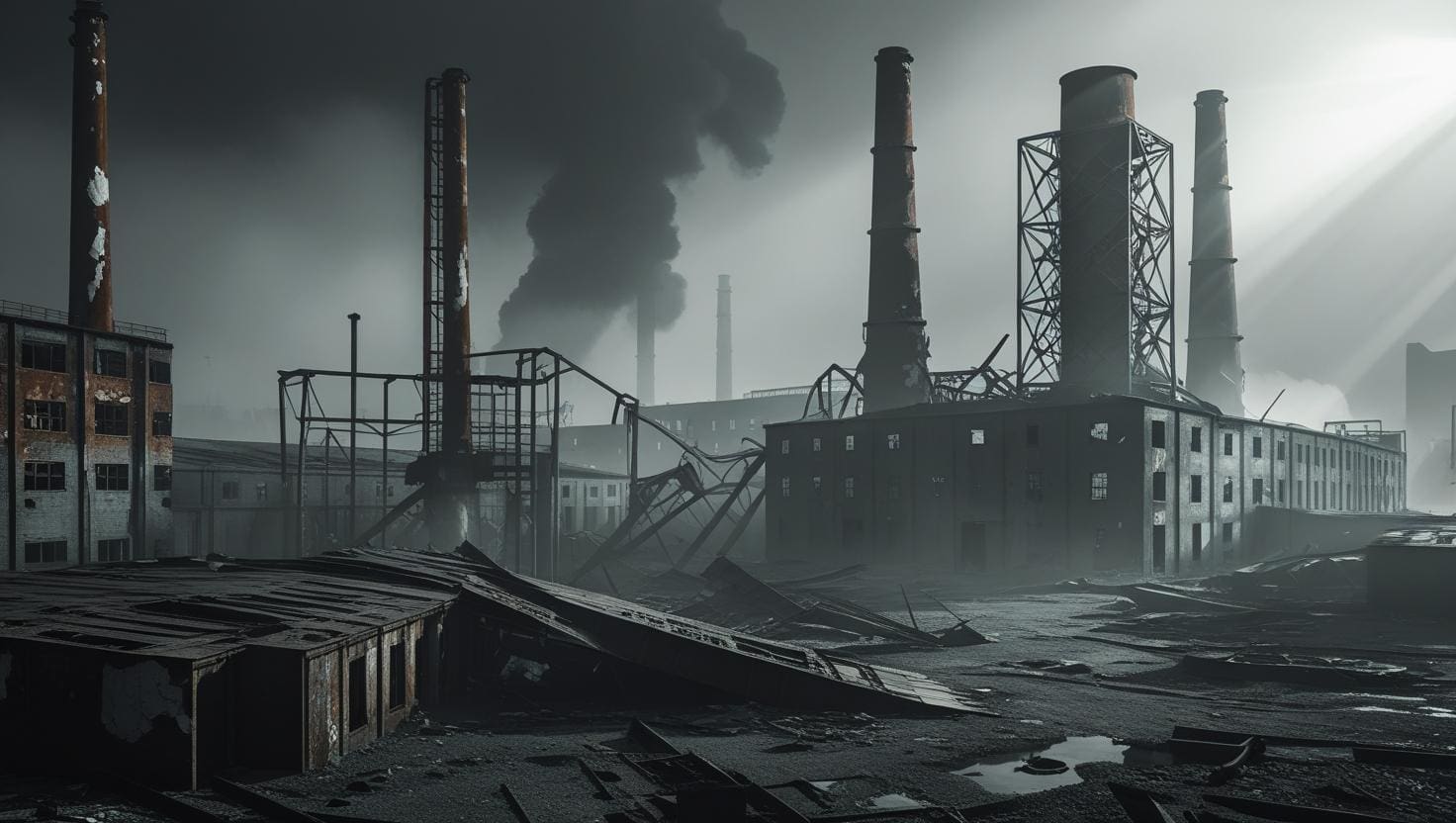Post-Industrial Heavy Metal: Nihilism, Marxism, & Sonic Rebellion
By: Jack Shadows
In the shadow of rusted factories and echoes of vanished labor, post-industrial heavy metal emerged—not just as music, but as a howl of cultural revolt. Forged from the collapse of working-class industry and infused with existential rage, it became the distorted voice of alienated youth, Marxist critique, and sonic defiance. Its distorted riffs and apocalyptic imagery told the story of a world devouring itself.
The Industrial Womb: Where Heavy Metal Was Born
The origins of heavy metal lie in places like Birmingham, England—a city once renowned for its industrial prowess, later marked by deindustrialization and social decline. It’s no coincidence that Black Sabbath, often considered the first true heavy metal band, arose here. As Tony Iommi once said, “You’d see people walking the streets with no jobs, no future. That’s where our music came from.” The post-industrial heavy metal phenomenon.
Alienation, Marxism, and the Metal Mindset
Marx’s concept of alienation—Metal reflected the pain of the working class. Marx wrote about people being cut off from their work, from each other, and meaning. Metal made that pain loud and clear.
Nihilism in Amplified Form
As the economic promise of the post-war era collapsed into the oil crisis, rising unemployment, and Cold War dread, metal evolved into a genre steeped in nihilism. Metal bands like Slayer, Morbid Angel, Napalm Death, and Control Denied sang not about hope, but about collapse.
Their lyrics were bleak sermons:
- “Raining Blood” (Slayer) – The lyrics evoke a world soaked in divine vengeance where the heavens have collapsed.
- “God of Emptiness” (Morbid Angel) – Anthem worships emptiness itself, mocking religion and embracing a cold, indifferent universe.
- “Life is a Death Sentence” (Napalm Death) – This grindcore beast condenses modern existential despair into a raging rejection of life’s imposed structure.
This wasn’t just adolescent angst. It was the philosophical cry of Nietzschean despair, a musical philosophy—rooted in despair, but defiant. Metalheads didn’t hide from the dark. They stared it down and turned it into musical riffs.
Post-Industrial Aesthetics and the Sound of Decay
Metal didn’t just sound heavy—it looked heavy. Album covers showed ruined cities, wastelands, and post-apocalyptic visions. The art matched the music and the world around it.
Where Marx criticized how capitalism turns people into tools, metal turned that pain into sound:
-
Low guitar tunings moaned like collapsing buildings.
-
Fast drums pounded like machines gone out of control.
-
Screamed vocals roared like workers who had nothing left to lose.
Metal became a protest—a refusal to accept a world run only by profit and power.
Community in the Void: Metal’s Dialectical Redemption
Despite its nihilism, heavy metal creates solidarity in darkness. Much like Marxism envisions a class consciousness born from shared struggle, metal scenes form around shared alienation. These are communities of the disillusioned, bound by distortion rather than delusion.
In the 1980s, fans made their magazines, shared demo tapes, and formed their underground worlds. These weren’t just fans. They were rebels. They built something real without waiting for permission.
Today, even with streaming and social media, metal still lives outside the mainstream. It still resists easy labels. It stays raw, loud, and loyal to its roots.
Conclusion: The Metal Dialectic
Heavy metal exists in a dialectic of despair and defiance. It howls from the rubble of post-industrial collapse, revealing the hollowness at the heart of capitalist promises. Yet within that howl is a spark of strength, truth, and fire.
As Marx wrote, “The philosophers have only interpreted the world in various ways; the point is to change it.”
Heavy metal doesn’t just describe the end of things. It becomes the sound of destruction—and the start of something new. It tells us: from ashes, we shall rise.
About The Author
jshadows
Guitar and hard rock became my life's obsession without a doubt trying to emulate my idols. Jimi Hendrix, Tony Iommi, Jimmy Page, Adrian Smith, James Hetfield, Dave Mustaine, Diamond Darrell, Michael Amott and Jeff Hannemann just to name a few. I've spent countless hours teaching myself and crafting the technique, the skills and the tone. Now just trying to share the knowledge.


